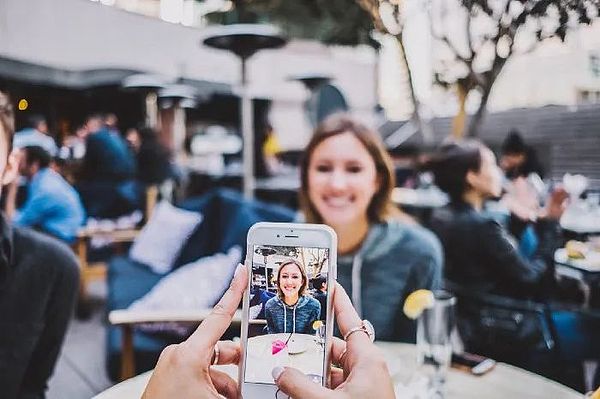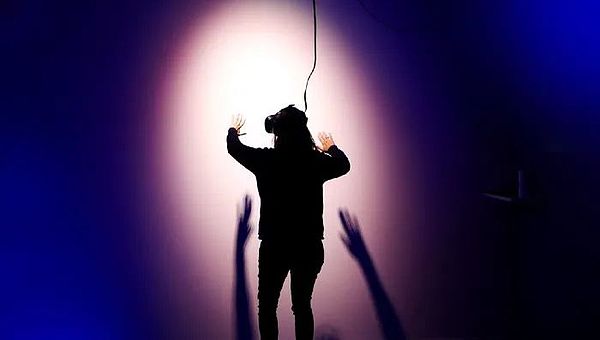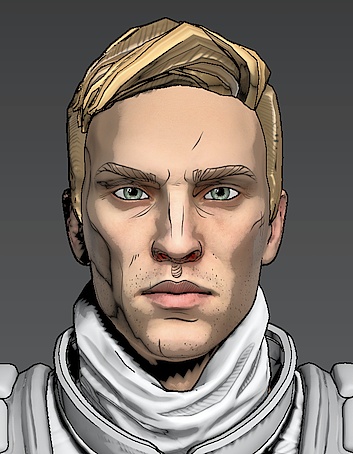Author: Ready Player Me; Translation: MetaCat
From chatting with strangers on early internet forums to today’s social media and multiplayer games, our online identities play an increasingly important role in our lives.
Online identity can have many different meanings. For Amazon, it’s the products we purchase and the books we like. For YouTube, it’s the content we watch.
- Evening Must-Read | Why Will DAOs Rise?
- Vertex Protocol Founder Considers Cross-Chain Transaction Solution
- Seeking the next cryptocurrency investment revolution Unibot project analysis
Your identity is: who you are and what you have done. Your visual identity is how others recognize you. This is what we will focus on in this article.
Ironically, the first words spoken on Alexander Graham Bell’s first telephone call included:
Mr. Watson, come here—I want to see you.
Our visual identity is an essential part of how we communicate. It’s how we represent others’ identities in our minds.
With the rise of the internet, the need to express our identities has become stronger.
Since then, how has our virtual identity evolved? More importantly, where are they headed in the future?
The Internet
With the emergence of BBS (1978), Usenet (1980), and IRC (1988), online communication began. The need to express our identities in virtual space was created.
Like other things on the early internet, identity was represented in text form. Usernames, pseudonyms, a string of characters that represent you in online social interactions.
Although the visual representation was simple, users felt a strong connection to their fictional identities.
A good example that proves this power can be traced back to an even earlier era: arcade games. Players could choose a combination of three characters as their nickname to represent their identity in the game. Players spent countless hours and money just to see their names on the high score board.

On the early internet, users hid behind anonymous electronic masks. You could be anyone. Another version of yourself that they preferred, sometimes it was even difficult to tell if you were talking to a dog.
Although anonymity can be useful in some ways, it can also be terrible in many others. It’s great because it makes you feel safer, more open. It’s terrible because it can be frustrating, which will be explained in detail in future articles.
Picons
In the 1990s, internet forums visually advanced. The next step in representing our online identities was avatars. Personal avatar icons (picons), which users could upload or choose from preset options on online forums.

Avatar represents the role, beliefs, and social status of users in the forum. It allows others to know your contributions without having to view your username. This is a more intuitive way to express your identity and interact with others.
Social Media
For a long time, using real-life identities on the internet was not common. Users hid behind a series of other selves they created on the internet for various purposes. It was horrifying and dangerous to use your real identity, so why would someone upload their photos to the internet?
The rise of social media changed this. Starting with Friendster and MySpace, people began to share their real names, pictures, and interests with others on the internet.
Currently, there are no restrictions on the personal information we share virtually. Vacation photos, photos of our children growing up, our political/religious beliefs.

I won’t spend too much time on this point because it’s already clear. Today, our online identities are our social media profiles, carefully curated highlights of our lives. This is how others on the internet get to know us and how we get to know others. The me on Facebook, the me on LinkedIn, the me on Instagram.
BitMoji
The idea behind BitMoji is to use a personal avatar identity to represent yourself and communicate with the masses online. Snap acquired the company in 2016. It was one of the most downloaded apps in 2017, and now has more monthly active users than Snapchat itself. People even use Bitmoji on their resumes when applying for jobs.

Not surprisingly, Bitmoji is also developing 3D versions corresponding to the original stickers, initially appearing in AR cameras and recently in Snap Gaming.
Gaming Avatars
Gaming is the new social media. Children under 13 spend more time playing and socializing on Roblox than the combined time spent on Facebook, YouTube, and Netflix.
Fortnite has similar statistics. Its user base is even larger than Roblox’s 100 million monthly active users, reaching 200 million.
These platforms have become the new generation’s digital gathering places, just like previous basketball courts and skate parks.
Fortnite earns up to $200-300 million in revenue per month by selling customizable items for visual avatars, giving us a glimpse into the relationship between users’ real-life and virtual identities.
VR/AR and Virtual Worlds
I believe that in the next decade, online communication will be increasingly dominated by virtual worlds. Just as Roblox and Fortnite perfectly illustrate, the native users of the new generation of technology are already growing up, spending more time in virtual worlds than on traditional social media and entertainment.
Facebook’s acquisition of Oculus is also a step in this direction. They see the future of social media in gaming and virtual worlds and are betting on it.

VR/AR is more personalized than video calls or any chat or game. Meeting someone in VR feels like being in the same room together. This is something that no other form of virtual communication can provide.
By combining the immersive features of VR/AR with the native users of the new generation of virtual worlds, we will eventually arrive at an interesting place.
In this exciting new world, how will our identities be expressed? Through virtual 3D Avatars.
Identity in the new world
What will the embodiment of the future look like? What do they represent, just like humans do?
One thing is certain, virtual avatars of the future will become the way we represent ourselves online. We will have complete freedom to choose the visual representation we prefer. You can become a troll, you can become a princess, you can be yourself, or be all of the above depending on the situation.
Personally, I believe most people will create virtual avatars in the same way they create social media profiles. Their avatars will be idealized versions of themselves. You can dress yourself up if you want.

Just like in social media, we will use different identities for different purposes. My professional (LinkedIn) avatar will look like the real-life me. My social (Instagram) avatar can be an idealized version of myself. Maybe a bit stronger, a bit more attractive.
Companies like Ready Player Me are doing this. They are building personal 3D avatar creators that people can use to create avatars they like. Starting from recognizable basics, users can freely customize styles, appearances, and more to achieve the desired effect.
There are many interesting issues to be resolved in the new avatar ecosystem. For example: creating personalized avatars, privacy, and handling ownership of virtual assets.
Whether these issues will be resolved by startups or existing major social/gaming companies remains to be seen. But one thing is certain, this is an exciting market.
Like what you're reading? Subscribe to our top stories.
We will continue to update Gambling Chain; if you have any questions or suggestions, please contact us!